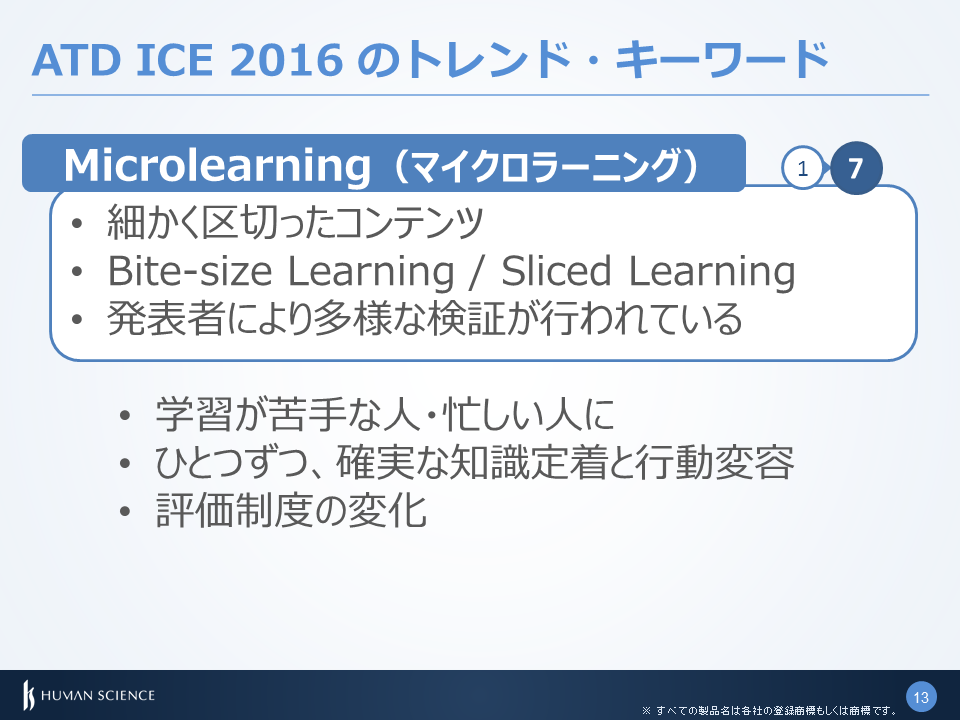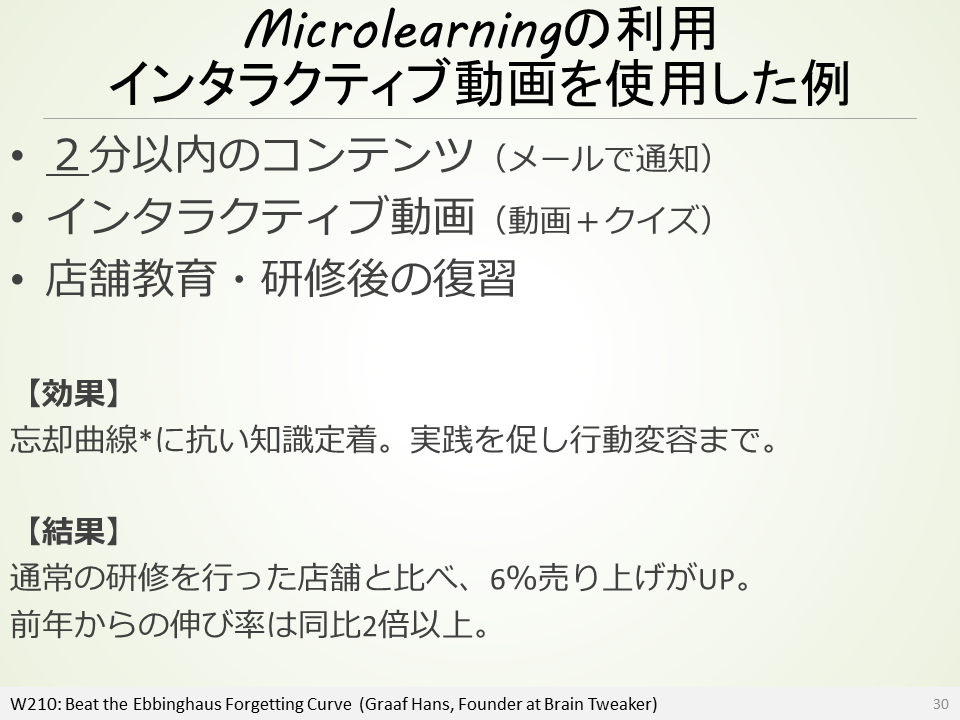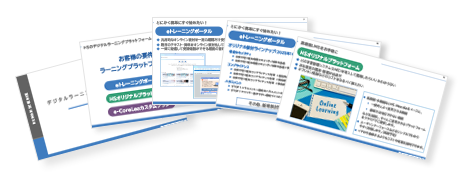2017.02.16
Microlearning for Everyday Learning
Since around 2016, the keyword microlearning has been actively used in the e-learning industry. I will introduce why it is popular and what kind of education it is in as easy-to-understand terms as possible.
At the world's largest talent development event held in 2016, ATD ICE (ATD International Conference and Exposition) (External link: English), microlearning was one of the most important keywords. The number of sessions searched increased from "1" in 2015 to "7" in 2016. …With this alone, it might seem buried among the 300+ sessions, but each session was extremely popular, and the keyword was also featured in many other sessions.
Since the second half of 2016, this keyword has been gaining traction in Japan, and companies that are implementing it have started to appear.
However, what exactly defines microlearning is still not very clear. One thing that is certain is that it involves "short (micro) learning materials." That shortness is generally around 1 to 3 minutes (sometimes within 5 or 10 minutes).
So, is it just that short content is microlearning? While that may be a broad interpretation, I believe that how we utilize it should be the essence of microlearning.

Why was it created?
There are various processes for participating in e-learning in corporate training. These include "company-wide," "targeting groups or job types," "selecting individuals," or "self-requesting to participate"... among others. Generally, it is common to conduct it on a company-wide scale to a certain extent.
In this case, the following challenges tend to arise.
Common Challenges in Company-Wide e-Learning
・Not viewed due to reasons such as being busy.
・Considered irrelevant content.
・Not retained as knowledge.
・Not linked to actions, etc.
One of the factors contributing to such challenges is the "difficulty of motivation."
Unlike group training (which lacks motivation from face-to-face instructors), it is difficult to accept the learning content as one's own challenge.
40/20/40 Model(External link: English) emphasizes the importance of the supervisor's involvement before and after training, but there are limitations in e-learning.
E-learning always faces challenges like this.
The above mainly occurs in Japan, but in the United States, the rise of a new generation known as Millennials has led to issues where traditional education (and other common knowledge) no longer applies. In order to align with their preference for convenience (not to pander, but to adapt effectively), various initiatives are being undertaken in e-learning. I believe that microlearning and game-based materials (gamification) are among these initiatives.
I have mentioned some technical points, but the main reason is technical growth. It means that systems like LMS, which only managed the history of learning so far, have become multifunctional to manage the entire education.
With the changes in people and technology, microlearning can be seen as holding great potential in the future of education (adult education).

Usage and Effect Image
Recently, "1-minute videos" related to fashion, makeup, and cooking have been trending. This is almost identical to microlearning and is already being utilized primarily by young people.
- Main Effects
- Busy people can easily use their spare time (3 minutes a day, repeated for 20 days a month, equals 1 hour/month)
- Teach within an engaging range and make learning a habit (A culture of learning is essential for corporate development)
- Provide necessary training at the right time (delivered in accordance with transfers, promotions, etc.)
- Even if you pack in a lot of information, you will forget it quickly*1
- Originally concise, making review easy. It is also likely to influence knowledge retention & behavior (Learning Transfer)*2
*1 Ebbinghaus's forgetting curve(external link)
*2 There are cases where efforts to link it to behavior change (instructional design) are also conducted.
There are various methods and ways to implement microlearning, such as using it for review after a one-hour session or allowing immediate practice through store simulations (video & quizzes).
Additionally, "I don't understand this, what should I do?" and "I have a little free time between meetings" are examples of the diverse needs we can meet with our educational offerings.

Summary
I believe that the ideal form and characteristics of microlearning can be summarized as follows:
・Is just being short not enough?
・Systematic support for delivery and management is necessary
・The goal is knowledge retention and behavior change
・The ease of continuing to learn on a daily basis
As various applications are developed in the future, new definitions or items that differ from the main text may emerge.
Please consider the main text as a reference for your considerations.
Related Services

Author:
Keigo Tachino
Education Solutions Department Consulting Unit
・Experience as a training instructor, web designer, etc.
・Engaged in instructional design, e-learning development, etc.
・Learning Designer (eLC certified)
・ATD International Professional Member
Contact Information:
Business Promotion Department Morooka
Phone Number: 03-5321-3111
hsweb_inquiry@science.co.jp












